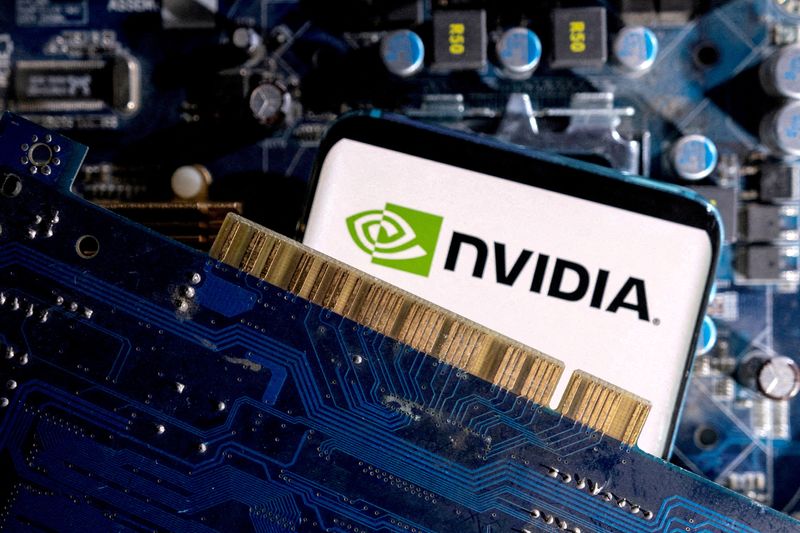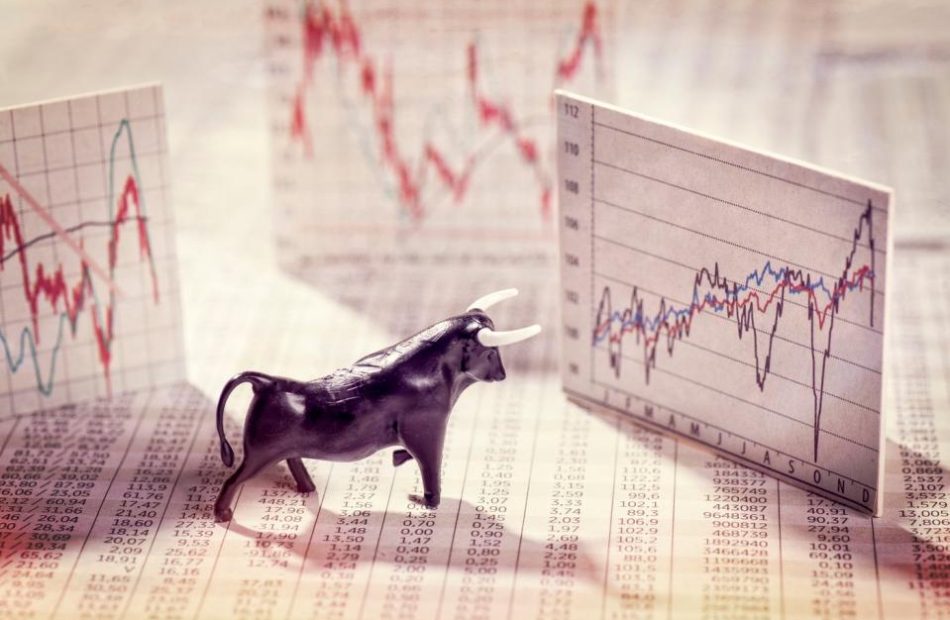Cava Stock Tumbles Late As CEO, Key Insiders Sell Shares After Earnings Spike
Cava Group (CAVA) tumbled early Tuesday after CEO Brent Schulman and several key executives and directors disclosed sales of Cava stock in the wake of the Mediterranean-themed restaurant chain’s post-earnings spike to record highs.
↑
X
Dow Jones Hits All-Time Highs; Sprouts, Netflix, MercadoLibre In Focus
CEO Schulman sold 210,504 shares for $24.87 million, according to SEC filings released Monday night. Ted Xenohristos, Cava co-founder and chief concept officer, sold 98,490 shares for $12.387 million. CFO Patricia Tolivar sold 5,000 shares for $628,175. Board member James White sold 1,500 shares for $190,770.
A trust linked to board member David Bosserman sold 5,000 shares for $627,550.
Cava Stock Nearly Tripled In 2024
Cava stock fell 8% in early Tuesday stock market trading. Shares climbed 3.1% to 125.80 on Monday.
On Friday, Cava skyrocketed 19.6%. That’s after reporting second-quarter earnings spiked 183% with revenue growth picking up to 35%, both beating analyst views.
Year to date, Cava stock has skyrocketed nearly 193%.
Cava came public at 22 a share in June 2023.
Please follow Ed Carson on Threads at @edcarson1971 and X/Twitter at @IBD_ECarson for stock market updates and more.
YOU MAY ALSO LIKE:
Why This IBD Tool Simplifies The Search For Top Stocks
Catch The Next Big Winning Stock With MarketSmith
Best Growth Stocks To Buy And Watch
Nvidia sales likely doubled – even that may not impress investors
By Arsheeya Bajwa
(Reuters) – Nvidia is likely to report on Wednesday that its second-quarter revenue more than doubled. But investors used to its blockbuster results will be expecting even more from the artificial intelligence chip giant.
A beat or a miss on Wall Street expectations could either stoke or shatter an AI rally on Thursday, a day after Nvidia reports earnings for the May-July period.
The company’s stock has surged more than 150% this year, adding $1.82 trillion to its market value and lifting the S&P 500 to new highs. On Monday, it was down 2.2% in afternoon trading, weighing on the index.
The stock is valued at about 37 times its forward earnings, compared with an average of around 29 for the top six tech companies on the benchmark index that includes the chipmaker.
Tech heavyweights, including Microsoft, which are spending heavily to build out their AI infrastructure, have been buying Nvidia’s powerful graphic processing units that allow large amounts of computing quickly. These chips are difficult to replace in present-day datacenters, which has sharply boosted Nvidia’s fortunes.
Nvidia is expected to have recorded a year-over-year jump of about 112% in second-quarter revenue to $28.68 billion, according to LSEG data as of Aug. 23.
But its adjusted gross margin likely dropped more than 3 percentage points to 75.8% from the first quarter, burdened by the cost of a production ramp-up to meet growing demand.
“They’re not only a benchmark for chips, but they’re also a benchmark for AI as a whole,” said Daniel Morgan, senior portfolio manager at Synovus Trust, which owns shares in big U.S. tech firms, including Nvidia.
“If Nvidia misses, (investors are) going to sell off every company in AI.”
Some investors are concerned about the company’s ability to meet lofty expectations and have questioned the pace of spending on AI by Nvidia’s largest customers.
These worries led to a 20% slump in Nvidia’s stock through much of July and early August, though a recent recovery has left the stock just about 5% below its record high in June.
There may be more trouble brewing around potential production delays of Nvidia’s next generation Blackwell AI chips. CEO Jensen Huang said in May the chips would ship in the second quarter, but analysts have flagged design hurdles that could push the timeline.
This means revenue growth might take a hit in the first half of next year, research group SemiAnalysis said. Margins could also get squeezed if Nvidia’s chip contractor TSMC raises fees, a possibility that the Taiwanese firm hinted at recently.
Nvidia is likely to forecast a 75% surge in third-quarter revenue to $31.69 billion, LSEG data showed, ending its five-quarter run of triple-digit growth and reflecting tough comparisons from a year ago when it surged about 206% to $18.12 billion.
For the past three quarters, Nvidia’s growth exceeded 200%.
“We’re reaching the law of large numbers here, once a company gets to a certain size, it just physically can’t keep up the same growth,” said Michael Schulman, chief investment officer at Running Point Capital.
Some analysts said Nvidia could offset much of the hit from the delay in Blackwell chips by substituting those orders with its prior generation Hopper chips. The Hopper family of processors is not as powerful or lucrative as Blackwell, but it is sufficient for most AI-related applications.
Investors will also seek updates on AI processors for the China market, where sales of its most advanced chips are barred by the U.S. government.
Nvidia’s China-focused processors, reportedly called H20 and less powerful than its best chips, could help the company gain business over the next few quarters in a major market where domestic champion Huawei has emerged as a competitor.
There are also mounting antitrust concerns about the company’s practices. US regulators are probing whether Nvidia pressured cloud providers to buy multiple products, and if it is trying to bundle its networking equipment with their sought-after AI chips.
(Reporting by Arsheeya Bajwa in Bengaluru; Editing by Sayantani Ghosh)
Retiring Early With $3 Million: What to Expect When You Stop Working
You can probably retire in financial comfort at age 45 if you have $3 million in savings. Although it’s much younger than most people retire, that much money can likely generate adequate income for as long as you live. Very little in finance is certain, however, and a 45-year-old’s ability to retire successfully with $3 million depends on a number of factors that can’t be predicted with certainty, including health and long-term inflation. If you want help planning for your retirement, consider talking it over with a financial advisor.
Is Retiring at 45 with $3 Million Possible?
The retirement age in the United States is about 64, so retiring at age 45 would make you an outlier. However, it’s not unheard of.
An analysis of data collected by the Federal Reserve for the 2017 edition of its “Survey of Household Economics And Decisionmaking” found that about 3.37% of people who currently consider themselves retired had stopped working between ages 45 and 49. This came to more than 2.25 million people who said they’d retired within a few years of turning 45.
Retiring at 45 is an attractive proposition. It likely means you’ll have more time to enjoy relationships, leisure and travel. For those with other passions such as volunteering and working on social impact initiatives, quitting work early can allow you to devote more time to these fulfilling endeavors.
How to Retire at 45 with $3 Million
Assuming you are 45 and have $3 million in after-tax dollars, a simple formula can suggest how much income you’ll have in retirement. For decades, a figure of 4% had been used to calculate a safe withdrawal amount in your first year of retirement. Morningstar has since suggested that 3.8% is a safer withdrawal rate.
However much money you choose to withdraw, the rest of your assets will remain invested and earning returns to fund future withdrawals. To account for inflation, your withdrawal amount should increase by the rate of inflation every year, so your purchasing power should not be diminished,
Assuming a 4% withdrawal rate and $3 million in savings, this will give you an annual income of $120,000 in your first year of retirement. Whether this will be enough depends on the lifestyle you have in mind.
If you’re ready to be matched with local advisors that can help you achieve your financial goals, get started now.
However, some experts recommend your annual retirement income should be about 75% of what your income was before retiring. Withdrawing $120,000 from your retirement savings would mean you earned approximately $160,000 per year while you were working.
If you do this, conventional wisdom dictates that your nest egg has a good chance of lasting for 30 years. Of course, if you retire at 45, this could mean you may run out of money by age 75, well before the age most people can expect to die. However, you can also probably count on Social Security benefits to contribute to your finances starting as soon as age 62, so you can reduce withdrawals of capital at that point.
Other strategies could also produce adequate retirement income. These include buying annuities and investing in dividend-paying stocks. It’s also possible to use a mix of techniques, putting some of your money into annuities and investing your remaining assets into a diversified portfolio, from which you would apply a safe withdrawal rate.
Consider matching with a financial advisor if you’d like to discuss your retirement strategy and goals with a pro.
Challenges of Retiring at 45 with $3 Million
Accumulating $3 million by age 45 is the first – and most obvious – challenge. Absent an inheritance or another windfall, building a $3 million nest egg will require a high income, some aggressive saving or both. You may need to save 20%, 30% or more of your salary to stop work at 45. To do that, you’ll have to slash expenses, generate additional income where possible and possibly take a more aggressive approach to investing in order to save $3 million.
Rules surrounding 401(k) withdrawals also pose a challenge for a 45-year-old retiree. Withdrawals from these accounts before age 59½ in most cases incur a 10% penalty, as well as payment of taxes owed.
Health insurance is another issue. Medicare is not available to most people before age 65, meaning you’ll have to factor health insurance premiums into your retirement budget.
Some other variables presenting potential problems include inflation and life expectancy. Inflation can reduce returns on stocks and similar investments when it is high and also lower the purchasing power of other income strategies. Most annuities, for instance, do not increase their payouts when inflation rises, although Social Security does.
And, while life expectancy can be estimated, no one knows for certain how long they will live. As a result, they can only approximate how long their nest egg will need to last. Everyone’s needs are different, so a financial advisor can help by giving you advice tailored to your circumstances and goals.
The Bottom Line
Retiring at age 45 with $3 million is quite feasible if you already have the money and your post-retirement income needs are not excessive. Accumulating that much money in time for such an early retirement will likely be challenging. Doing so may require a high income, a tight budget, extra income on the side or taking some chances with your investments in hopes of earning higher returns. Still, some people do accomplish it and the rewards can make the sacrifices worthwhile.
Retirement Planning Tips
-
Retirement planning can be complex so it’s a great topic to discuss with a financial advisor. SmartAsset’s free tool matches you with up to three financial advisors in your area, and you can interview your advisor matches at no cost to decide which one is right for you. If you’re ready to find an advisor who can help you achieve your financial goals, get started now.
-
Use SmartAsset’s Social Security calculator to tell you what you can expect from the government-run safety net. Your age, annual income, marital status and anticipated retirement age is all it needs to figure out what you can expect to receive each month in Social Security benefits when you stop working.
-
Keep an emergency fund on hand in case you run into unexpected expenses. An emergency fund should be liquid — in an account that isn’t at risk of significant fluctuation like the stock market. The tradeoff is that the value of liquid cash can be eroded by inflation. But a high-interest account allows you to earn compound interest. Compare savings accounts from these banks.
-
Are you a financial advisor looking to grow your business? SmartAsset AMP helps advisors connect with leads and offers marketing automation solutions so you can spend more time making conversions. Learn more about SmartAsset AMP.
Photo credit: ©iStock.com/simonkr, ©iStock.com/Fly View Productions, ©iStock.com/Amanda Caroline da Silva
The post Can I Retire at 45 With $3 Million? appeared first on SmartAsset Blog.
Prediction: This Unstoppable Vanguard ETF Will Keep Beating the S&P 500 Over the Long Term
The S&P 500 (SNPINDEX: ^GSPC) is an index of 500 companies listed on U.S. stock exchanges. It’s a prestigious achievement for any company to be admitted into the index, and only the highest-quality names make the cut.
Selection is at the discretion of the Index Committee, but companies must be profitable, and they also need a market capitalization of at least $18 billion. That figure rises over time, because the S&P 500 is weighted by market cap, which means the largest companies in the index have a greater influence over its performance than the smallest.
As a result, technology has become the largest sector in the index with a weighting of 31.4%. It includes trillion-dollar giants Microsoft, Apple, and Nvidia.
Meet the S&P 500 Growth index
The S&P 500 Growth index holds around 231 of the best-performing stocks in the regular S&P 500, and excludes the rest. It selects those stocks based on factors like their momentum and the sales growth of the underlying companies.
Therefore, it’s no surprise the tech sector has a whopping 50.2% weighting in the Growth index. Nvidia, for example, grew its revenue by 262% year over year during its most recent quarter, and its stock has soared 200% over the past 12 months alone.
But here’s the best part. The Growth index rebalances every quarter, which means it removes stocks that no longer meet its criteria for inclusion and replaces them with more suitable candidates. As a result, this index has typically outperformed the regular S&P 500 over the long term.
The Vanguard S&P 500 Growth ETF tracks the S&P 500 Growth index
The Vanguard S&P 500 Growth ETF (NYSEMKT: VOOG) is designed to track the performance of the S&P 500 Growth index by holding the same stocks and maintaining similar weightings.
The below table shows the top five holdings in the Vanguard ETF, and how their weightings compare to the regular S&P 500:
|
Stock |
Vanguard ETF Weighting |
S&P 500 Weighting |
|---|---|---|
|
1. Apple |
12.28% |
6.89% |
|
2. Microsoft |
11.93% |
6.70% |
|
3. Nvidia |
11.04% |
6.20% |
|
4. Amazon |
4.43% |
3.69% |
|
5. Meta Platforms |
4.17% |
2.24% |
Data source: Vanguard. Portfolio weightings are accurate as of July 31, 2024, and are subject to change.
The Vanguard ETF delivered a return of 36.5% over the past year, comfortably outperforming the S&P 500, which is up 30.2%:
There were two factors at play:
-
The five stocks in the above table have delivered an average return of 76.7% over the past year, and since they have a much higher weighting in the Vanguard ETF relative to the S&P 500, that contributed to the outperformance of the ETF.
-
As I mentioned earlier, the Growth index (and by extension, the Vanguard ETF), only holds the top-performing stocks from the S&P 500 and excludes the laggards, which also contributed to the higher return in the ETF.
The Vanguard ETF can outperform the S&P 500 over the long term
The Vanguard ETF has delivered a compound annual return of 15.9% since it was established in 2010, beating the average annual gain of 13.7% in the S&P 500 over the same period. While that 2.2 percentage point difference each year doesn’t sound like much, it makes a big impact in dollar terms thanks to the effects of compounding:
|
Starting Balance (2010) |
Compound Annual Return |
Balance in 2024 |
|---|---|---|
|
$10,000 |
15.9% (Vanguard ETF) |
$78,916 |
|
$10,000 |
13.7% (S&P 500) |
$60,345 |
Calculations by author.
If technologies like cloud computing, semiconductors, and artificial intelligence continue to drive the tech sector forward, the largest holdings in the Vanguard ETF are likely to remain constant in the coming years. In that scenario, I predict the ETF will continue outperforming the S&P 500.
However, even if there is a shift in market leadership, the Growth index will rebalance as necessary. Therefore, if the Vanguard ETF does suffer a period of underperformance relative to the S&P 500, I think it’s likely to be very short-lived.
Should you invest $1,000 in Vanguard Admiral Funds – Vanguard S&P 500 Growth ETF right now?
Before you buy stock in Vanguard Admiral Funds – Vanguard S&P 500 Growth ETF, consider this:
The Motley Fool Stock Advisor analyst team just identified what they believe are the 10 best stocks for investors to buy now… and Vanguard Admiral Funds – Vanguard S&P 500 Growth ETF wasn’t one of them. The 10 stocks that made the cut could produce monster returns in the coming years.
Consider when Nvidia made this list on April 15, 2005… if you invested $1,000 at the time of our recommendation, you’d have $792,725!*
Stock Advisor provides investors with an easy-to-follow blueprint for success, including guidance on building a portfolio, regular updates from analysts, and two new stock picks each month. The Stock Advisor service has more than quadrupled the return of S&P 500 since 2002*.
*Stock Advisor returns as of August 22, 2024
Randi Zuckerberg, a former director of market development and spokeswoman for Facebook and sister to Meta Platforms CEO Mark Zuckerberg, is a member of The Motley Fool’s board of directors. John Mackey, former CEO of Whole Foods Market, an Amazon subsidiary, is a member of The Motley Fool’s board of directors. Anthony Di Pizio has no position in any of the stocks mentioned. The Motley Fool has positions in and recommends Amazon, Apple, Meta Platforms, Microsoft, and Nvidia. The Motley Fool recommends the following options: long January 2026 $395 calls on Microsoft and short January 2026 $405 calls on Microsoft. The Motley Fool has a disclosure policy.
Prediction: This Unstoppable Vanguard ETF Will Keep Beating the S&P 500 Over the Long Term was originally published by The Motley Fool
Jim Jordan On Kamala Harris's Healthcare Stance: 'She Wants To Take Your Private Healthcare Away Entirely!'
Rep. Jim Jordan (R-Ohio), recently expressed criticism of Kamala Harris’s healthcare policies on X, he alleged that she would take away private healthcare entirely.
What Happened: On Thursday, Jordan posted his disapproval of Harris’s healthcare plans, comparing them unfavorably to those of former President Barack Obama.
He stated, “President Obama once said, “If you like your healthcare, you can keep it.” Then countless Americans lost their healthcare. Kamala Harris is going a step further. She wants to take your private healthcare away entirely!”
Don’t Miss:
President Obama once said “if you like your healthcare, you can keep it.”
Then countless Americans lost their healthcare.
Kamala Harris is going a step further.
She wants to take your private healthcare away entirely!
— Rep. Jim Jordan (@Jim_Jordan) August 22, 2024
The post comes in the wake of Harris’s endorsement by Democratic delegates after President Joe Biden’s exit from the presidential race. Harris, a former California Senator and San Francisco district attorney, has been discussing her stance on key issues, including healthcare.
Why It Matters: Harris recently presented her economic agenda in North Carolina, emphasizing the expansion of Medicare negotiations to include all Americans and pledging to lower the cost of insulin and prescription drugs.
She highlighted her past efforts as California’s attorney general in combating price inflation and vowed to eliminate medical debt, reported The Hill. Harris also criticized former President Donald Trump’s stance on the Affordable Care Act and Medicare, asserting that his policies would undo the progress made. Harris stated, “We’ve come too far to let that happen.”
Harris’s views on healthcare and other key political topics are significantly different from those of the Republican nominee, former President Trump. As reported in a Benzinga article, Harris’s potential presidency could result in higher corporate taxes, impact consumer staples, and boost the solar energy sector.
Did You Know?
“ACTIVE INVESTORS’ SECRET WEAPON” Supercharge Your Stock Market Game with the #1 “news & everything else” trading tool: Benzinga Pro – Click here to start Your 14-Day Trial Now!
Get the latest stock analysis from Benzinga?
This article Jim Jordan On Kamala Harris’s Healthcare Stance: ‘She Wants To Take Your Private Healthcare Away Entirely!’ originally appeared on Benzinga.com
© 2024 Benzinga.com. Benzinga does not provide investment advice. All rights reserved.
Should You Buy Nvidia Before Aug. 28? Here's What the Billionaire CEOs Are Saying.
All eyes are again turning to Nvidia (NASDAQ: NVDA) this week.
The artificial intelligence (AI) chip superstar is set to report its results for fiscal 2025’s second quarter (which ended July 28) after hours on Wednesday, Aug. 28. As with the last several quarterly reports, the results are highly anticipated.
Nvidia is getting a lot more attention these days because of its leadership role in the generative AI revolution. The launch of OpenAI’s ChatGPT accelerated the demand for graphics processing units (GPUs) and other more advanced components that many companies use to run complex AI models.
There’s a lot of speculation around the upcoming earnings report as Nvidia’s results are likely to heavily influence whether the stock market, driven by the AI boom, continues its upward swing or whether it pulls back on concerns about a potential AI bubble.
It’s impossible to consistently predict a company’s quarterly results or the market’s reaction to them, but Nvidia stock watchers have one advantage: Most of its big tech peers have already reported second-quarter earnings and the CEOs of these companies provided commentary on the state of play in the emerging AI industry. For investors, there were some key insights that offer hints about Nvidia’s performance in the second quarter.
Demand for Nvidia products is alive and well
While there were some concerns in the stock market that AI stocks could be entering a bubble, especially when shares of Nvidia and its peers fell sharply in July through early August, it’s clear that there’s still a shortage of Nvidia components as companies rapidly add and expand new data centers.
Speaking on Tesla‘s second-quarter earnings call on July 23, CEO Elon Musk not only paid Nvidia a high compliment but underscored the limited supply of its product, saying:
I should preface this by saying I’m incredibly impressed by Nvidia’s execution and the capability of their hardware. And what we are seeing is that the demand for Nvidia hardware is so high that it’s often to difficult to get the GPUs. I guess I’m quite concerned about actually being able to get … Nvidia GPUs and when we want them.
There’s little doubt from Musk’s statement that the supply/demand imbalance that has made prices for Nvidia hardware soar and its sales spike persisted through the second quarter.
Similarly, Meta Platforms CEO Mark Zuckerberg offered his thoughts on the evolving AI market on the July 31 earnings call, saying, “We expect that having sufficient compute capacity will be central to many of these opportunities, so we are investing meaningfully in infrastructure to support or core AI work, in content ranking and ads, as well as our generative AI and advanced research efforts.”
Phrases like “having sufficient compute capacity” and “investing meaningfully in (AI) infrastructure” essentially mean “buying Nvidia components.”
Meta CFO Susan Li also made it clear that this trend would only continue to grow as she said, “Our expectation, obviously again, is that we are going to significantly increase our investments in AI infrastructure next year,” which bodes well for Nvidia.
Zuckerberg elaborated on his thinking and that of many of his peers during a podcast interview with a Bloomberg reporter. He acknowledged that there was a risk of overspending on AI infrastructure, but added that the bigger risk was underinvesting, “because the downside of being behind is that you’re out of position for like the most important technology for the next 10 to 15 years.”
Alphabet CEO Sundar Pichai echoed that sentiment, saying on the company’s recent earnings call, “When we go through a curve like this, the risk of underinvesting is dramatically greater than the risk of overinvesting for us here.”
Is Nvidia a buy before its earnings report?
For Nvidia investors, the statements above should offer some reassurance that business continued to boom in the fiscal second quarter as financial reports and statements from the “Magnificent Seven” companies indicated that spending on AI infrastructure continued to soar and tech giants like Meta Platforms expect it to continue to do so into next year.
Whether Nvidia stock gains on its earnings report will depend on how its results compare to analyst estimates. Currently, the average Wall Street analyst expects revenue of $25.64 billion in the quarter, up 90% from the quarter a year ago, and calls for adjusted earnings per share to jump from $1.19 in fiscal 2024’s Q2 to $2.45.
The CEO statements above aren’t a guarantee that Nvidia will rise on its earnings report, but they do offer strong evidence that the AI chip titan has a bright future ahead of it as the big tech companies all intend to keep buying its product.
That’s reason enough to buy Nvidia stock before earnings, regardless of how it moves on Thursday.
Should you invest $1,000 in Nvidia right now?
Before you buy stock in Nvidia, consider this:
The Motley Fool Stock Advisor analyst team just identified what they believe are the 10 best stocks for investors to buy now… and Nvidia wasn’t one of them. The 10 stocks that made the cut could produce monster returns in the coming years.
Consider when Nvidia made this list on April 15, 2005… if you invested $1,000 at the time of our recommendation, you’d have $792,725!*
Stock Advisor provides investors with an easy-to-follow blueprint for success, including guidance on building a portfolio, regular updates from analysts, and two new stock picks each month. The Stock Advisor service has more than quadrupled the return of S&P 500 since 2002*.
*Stock Advisor returns as of August 22, 2024
Suzanne Frey, an executive at Alphabet, is a member of The Motley Fool’s board of directors. Randi Zuckerberg, a former director of market development and spokeswoman for Facebook and sister to Meta Platforms CEO Mark Zuckerberg, is a member of The Motley Fool’s board of directors. Jeremy Bowman has positions in Meta Platforms. The Motley Fool has positions in and recommends Alphabet, Meta Platforms, Nvidia, and Tesla. The Motley Fool has a disclosure policy.
Should You Buy Nvidia Before Aug. 28? Here’s What the Billionaire CEOs Are Saying. was originally published by The Motley Fool
Is Pfizer Stock Still a Buy After an Unexpected Setback?
With Pfizer (NYSE: PFE) stock badly underperforming the market over the past three years, falling by 32% while the market rose by close to the same amount, the last thing shareholders want to hear is news of another setback. Alas, the latest stumble was a somewhat unexpected one, and now the company will probably not realize revenue from one of its programs.
But is the stock still worth buying in hopes of a recovery over the long term? To answer that question in more detail, let’s put this setback into context.
The bull thesis is weaker now
The story of Pfizer’s stock over the last few years is inseparable from the trajectory of its coronavirus vaccine, Comirnaty. In 2022, the vaccine contributed to a total of more than $100 billion in revenue, Pfizer’s highest ever. Few thought that such heights were sustainable for the long term, but many, including yours truly, assumed that there would be considerable demand for annual booster doses.
That hasn’t happened. The company only expects to make up to $62.5 billion in revenue for 2024. Sales of Comirnaty in the second quarter were just $195 million, down 87% from a year prior, and there’s no expectation that they will resurge.
But even after the booster-shot argument for the stock’s growth fell apart, the broader bull thesis rooted in the success of Pfizer’s infectious-disease segment was far from dead. A combination shot against both seasonal influenza and the prevailing coronavirus variant could potentially bolster profits. With the convenience of one appointment to gain (temporary) protection against more than one illness, the draw to get vaccinated would be much stronger, which would support more sales.
Alas, that door now appears to be closing as well, for entirely different reasons. On Aug. 16, Pfizer and its collaborator BioNTech announced that a phase 3 clinical trial of their joint candidate to prevent COVID as well as two strains of influenza (flu A and flu B) had failed to prove that it generated sufficient immunity against influenza B. In this instance, the bar for “sufficient immunity” is set by other vaccines that are considered to be the standard of care against the same strains of the same viruses.
How big of a setback will these trial results be in terms of lost revenue, assuming the business doesn’t find a way to salvage the program?
Per a report by Fortune Business Insights, the market for influenza vaccines could be worth as much as $17.7 billion by 2032, up from more than $7.9 billion in 2023. While the ongoing market for coronavirus jabs is more difficult to size appropriately due to its sharp contractions over the last year and a half, Statista estimates that by 2029 it’ll be worth roughly $9.7 billion annually.
Pfizer would be splitting both markets with its competitors if it commercialized a combination shot. But as one of the vaccine market’s leaders, it would probably bring in at least $1 billion in sales per quarter with its candidate. That means it might have just lost a chance at launching another blockbuster drug. There aren’t any other comparable programs in Pfizer’s pipeline right now.
What’s more, the chances of it tweaking the candidate, then starting another series of clinical trials that ultimately lead to the vaccine’s approval and commercialization, are not high. Competitors like Moderna, GSK, and Sanofi recently hit the same roadblock as Pfizer and BioNTech’s candidate did with their respective flu-vaccine programs.
There’s still likely a lot of growth on the way
The investment thesis for Pfizer is slightly weakened by its combination-vaccine struggles. But the projected growth of the company, and especially its oncology segment, is still sufficient to justify buying the stock.
With its ever-expanding collection of anti-cancer drugs, it expects to be treating twice as many patients in 2030 as the 2.3 million it treated in 2023. It also expects to have more than eight blockbuster oncology medicines in its portfolio by then, up from just five today. There should be plenty of products that bring in recurring revenue.
Aside from growth, the stock’s valuation is currently on the cheap side, trading at a forward price-to-earnings (P/E) multiple of just under 11, based on analysts’ estimates. That’s far lower than the forward P/E of the S&P 500, which is 21.6.
The Pfizer of today isn’t a screaming buy, but it’s still worth purchasing. As its new growth drivers come online, its current bargain price will disappear. Don’t read too much into the setbacks with its combination-vaccine candidate; it has many other more lucrative programs in the works.
Should you invest $1,000 in Pfizer right now?
Before you buy stock in Pfizer, consider this:
The Motley Fool Stock Advisor analyst team just identified what they believe are the 10 best stocks for investors to buy now… and Pfizer wasn’t one of them. The 10 stocks that made the cut could produce monster returns in the coming years.
Consider when Nvidia made this list on April 15, 2005… if you invested $1,000 at the time of our recommendation, you’d have $792,725!*
Stock Advisor provides investors with an easy-to-follow blueprint for success, including guidance on building a portfolio, regular updates from analysts, and two new stock picks each month. The Stock Advisor service has more than quadrupled the return of S&P 500 since 2002*.
*Stock Advisor returns as of August 26, 2024
Alex Carchidi has no position in any of the stocks mentioned. The Motley Fool has positions in and recommends Pfizer. The Motley Fool recommends BioNTech Se, GSK, and Moderna. The Motley Fool has a disclosure policy.
Is Pfizer Stock Still a Buy After an Unexpected Setback? was originally published by The Motley Fool
'This Is Not Sensible Policy': Obama's Chief Economist Dismisses Kamala Harris' Price Gouging Crackdown
Vice President Kamala Harris‘ presidential campaign has embraced a populist economic message, blaming corporate greed for high grocery prices. However, her proposal to ban price gouging is drawing criticism from economists, including a key figure from the Obama administration.
Don’t Miss:
Jason Furman, who served as Chairman of the Council of Economic Advisers under President Obama, dismissed Harris’s plan in plain terms. “This is not sensible policy,” Furman told The New York Times. “The biggest hope is that it ends up being a lot of rhetoric and no reality.”
Harris’s campaign announced last week that she would call for a federal ban on corporate price gouging for groceries in an upcoming economic policy speech. The move appears designed to appeal to swing voters frustrated by persistent inflation, particularly in everyday essentials like food.
Trending: Can you guess how many Americans successfully retire with $1,000,000 saved? The percentage may shock you.
However, economists across the political spectrum argue that corporate behavior played a minor role in recent price increases compared to factors like supply chain disruptions, shifts in consumer demand, and expansionary fiscal and monetary policies during the pandemic.
“If prices are rising on average over time and profit margins expand, that might look like price gouging, but it’s actually indicative of a broad increase in demand,” Joshua Hendrickson, an economist at the University of Mississippi, explained to the Times.
Furman warned that policies aimed at curbing price increases could hinder economic adjustment. “If prices do not rise in response to strong demand, new companies may not have as much inclination to jump into the market to ramp up supply.”
Trending: Founder of Personal Capital and ex-CEO of PayPal re-engineers traditional banking with this new high-yield account — start saving better today.
The debate points to the tension between politically popular proposals and economic orthodoxy. Kevin O’Leary, the “Shark Tank” investor, expressed surprise that Harris didn’t move toward more “centrist” policies. “Her advisors have given her some bad advice,” O’Leary said in a recent Fox News interview, predicting increased scrutiny of how the programs would be implemented.
See Also: Don’t miss out on the next Nvidia – you can invest in the future of AI for only $10.
Some economists, however, see merit in efforts to address corporate pricing power. Isabella Weber of the University of Massachusetts Amherst argues that allowing companies to reap outsized profits during supply shocks could set a worrying precedent for future crises.
“If the worst of times for ordinary people ends up being the best of times for corporations, some sort of basic social contract is kind of crumpling,” she said in the report.
With inflation cooling but still a top concern for many Americans, the debate over price gouging and corporate profits will likely remain at the front of economic policy discussions in the months ahead.
Read Next:
“ACTIVE INVESTORS’ SECRET WEAPON” Supercharge Your Stock Market Game with the #1 “news & everything else” trading tool: Benzinga Pro – Click here to start Your 14-Day Trial Now!
Get the latest stock analysis from Benzinga?
This article ‘This Is Not Sensible Policy’: Obama’s Chief Economist Dismisses Kamala Harris’ Price Gouging Crackdown originally appeared on Benzinga.com
© 2024 Benzinga.com. Benzinga does not provide investment advice. All rights reserved.
Why Viking Therapeutics could be 'onto something pretty amazing'
Eli Lilly (LLY) and Novo Nordisk (NVO) have become hot stocks over the past year thanks to their blockbuster GLP-1 drugs to treat obesity.
Over the last year, Lilly and Novo shares are up 72% and 44%, respectively. By market cap, Novo is the largest company in Europe while Lilly ranks eighth among US companies with a market cap of $900 billion.
Shares of both companies have been bolstered by promising research that shows expanded indications beyond losing weight and treating diabetes, sending investors on the hunt for the next big breakthrough in the space.
On a recent segment of Good Buy or Goodbye (video above), RSE Ventures CEO Matt Higgins made the case for Viking Therapeutics (VKTX).
“We all know what Eli Lilly and what [Novo Nordisk have] done,” Higgins, who is invested in $VKTX, told Yahoo Finance. “But it’s a massive TAM [total addressable market]. It’s a $150 billion market. And [Viking] is a biotechnology firm … and they are onto something pretty amazing. They are working on two products: One is a shot that you would take once a month, and the other is a pill, which is the holy grail and early studies show that it’s being very well tolerated.”
Higgins isn’t the only one who’s noticed. Viking’s shares are up nearly 250% this year. At a market cap of $7 billion, its size is dwarfed by Novo Nordisk and Eli Lilly.
Another big contrast with the pharma giants is that Viking doesn’t yet have any revenue because its treatments are still in development. And as of June, the company didn’t even have 30 full-time employees; combined, Novo and Lilly employ more than 100,000 people.
Even with the surge in Viking stock this year, Higgins thinks shares are still attractive, with two potential catalysts going forward.
One is the possibility of being acquired: He ballparks a takeout value at $15 billion, or roughly double today’s value.
The other is a conference in November, at which Viking is speculated to update its findings around its GLP-1s.
“I don’t think it’s priced in at all,” Higgins said.
Julie Hyman is the co-host of Market Domination on Yahoo Finance. You can find her on social media @juleshyman.
Click here for the latest stock market news and in-depth analysis, including events that move stocks
Read the latest financial and business news from Yahoo Finance










